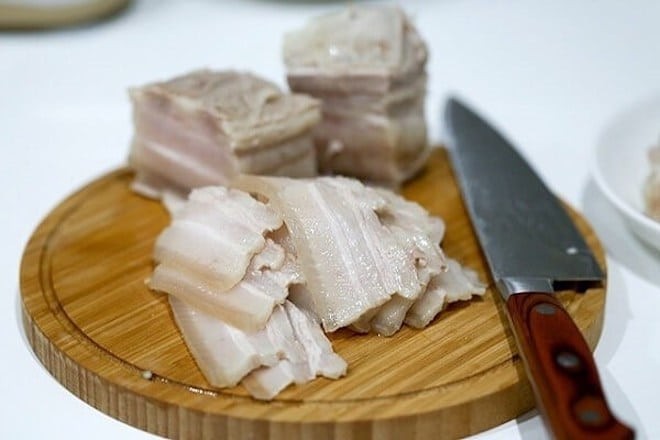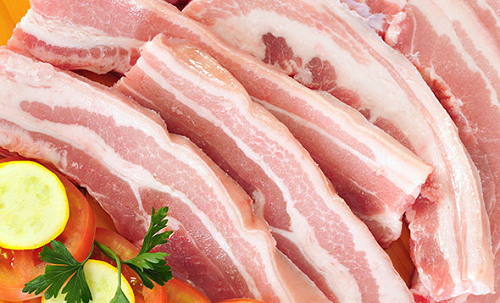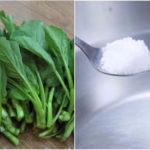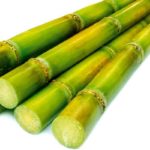Mistakes to Avoid When Boiling Meat
Putting the meat in cold water right from the start
If you do it this way, the nutrients will get washed out, along with any impurities, which is why you’ll see a lot of bubbles and residue on the surface of the water. Even though the dirt is pushed out, the nutrients won’t be retained, so we shouldn’t continue this habit.
Adding cold water when boiling the meat
When boiling pork and the water starts to decrease, many women will immediately add cold water to continue boiling the meat. This method is completely wrong as it will cause the protein and fats in the meat and bones to coagulate, making the meat tough and chewy, and also affecting the taste.
At the same time, you shouldn’t add salt while boiling the meat because the NaCl in the salt will make the meat tough and shrink. The best thing to do is if you feel the water is running low, add boiling water and continue boiling.
Adding table salt to the boiling meat pot
If you add salt to the pot while the meat is boiling, the NaCl in the table salt will cause the protein in the meat to solidify quickly, making the meat tough and shrink.
Poking the meat with a fork to check if it is cooked
Poking the meat when boiling seems like a normal action that doesn’t have any impact on the boiled meat.
But in reality, when you poke the meat with a fork while boiling, the nutrients in the meat will seep out, dissolve quickly into the water, and reduce the nutrients and flavor of the boiled meat.
Therefore, you should estimate the cooking time for the meat and boil it for the appropriate time, remember the size of the meat, amount of water, heat intensity, and corresponding boiling time, so you don’t need to test the meat by using a fork.
Cutting the meat immediately after boiling

If you want to ensure the temperature, many people will cut the meat immediately after boiling. This is a mistake because at this time, you will have difficulty cutting beautiful, precise pieces of meat due to its softness.
The best thing to do is to put the meat in a bowl of lukewarm water for about a minute before cutting it. The meat will still be warm, delicious, and visually appealing.
Overcooking the meat
According to nutrition experts, some people have a habit of cooking meat until it is overcooked, soft and crumbly, without knowing that if the meat is at a temperature between 200 to 300 degrees Celsius, the vitamins and nutrients in the meat will undergo a chemical reaction, forming aromatic amino acids that can potentially cause cancer.
Tips for Deliciously Boiling Meat
Choose fresh and clean meat

The first determining factor for delicious boiled meat is fresh and clean ingredients. Pay attention to choose meat with a clear origin, a fresh pink color, firm texture, good elasticity when pressed, and a dry cut surface.
Clean and prepare the meat properly
This step is quite important to ensure the meat is fragrant and delicious. Rub the meat with lemon and salt or soak it in diluted salt water, then rinse it thoroughly. To remove impurities, briefly parboil the meat in hot water at 70-80 degrees Celsius with a little ginger and salt. After that, skim off and rinse again. This not only helps to make the meat fragrant but also utilizes the broth to make soup.
The boiling process
The first time, add 1 teaspoon of vinegar, a few thin slices of ginger, and 1/2 teaspoon of salt to the boiling water, then blanch the pork for about 2 minutes before removing it and rinsing it again. This way, the meat won’t have a pungent smell. Adding vinegar and salt also helps the meat stay white and clean.
In the second boiling, put the meat in the pot from the beginning, pour enough water, add a few crushed spring onions, and season the meat for a rich flavor, then boil. Let the meat boil in the pot for 5 to 10 minutes, then use a skewer to check if the meat is thoroughly cooked.
Braising the meat for a sweeter and whiter result
To prevent the meat from turning red, after boiling for a certain time (10-15 minutes), it is best to turn off the heat, cover the pot and let it braise for another 10 to 15 minutes, depending on the size and weight of the meat.
This helps the inside of the meat (with pork knuckle banded) stay white and gradually absorb the flavors, resulting in sweet and tender meat. After boiling, transfer the meat to a bowl of boiling water to cool, add ice and a few slices of lime to make the skin whiter and crispier.
Source: Giaoducthoidai.vn
3 Spices to Limit when Boiling Meat to Preserve Flavor
Uncover the Surprising Health Advantages of Sugarcane Juice
Do you believe in the power of sugarcane juice? From giving your body an energizing natural boost to detoxifying your liver and aiding digestion, this drink offers an array of benefits. Not to mention its ability to help maintain healthy teeth, clear up skin, and combat fatigue. Have you ever wondered what wonders a simple glass of sugarcane juice can do for you?






































